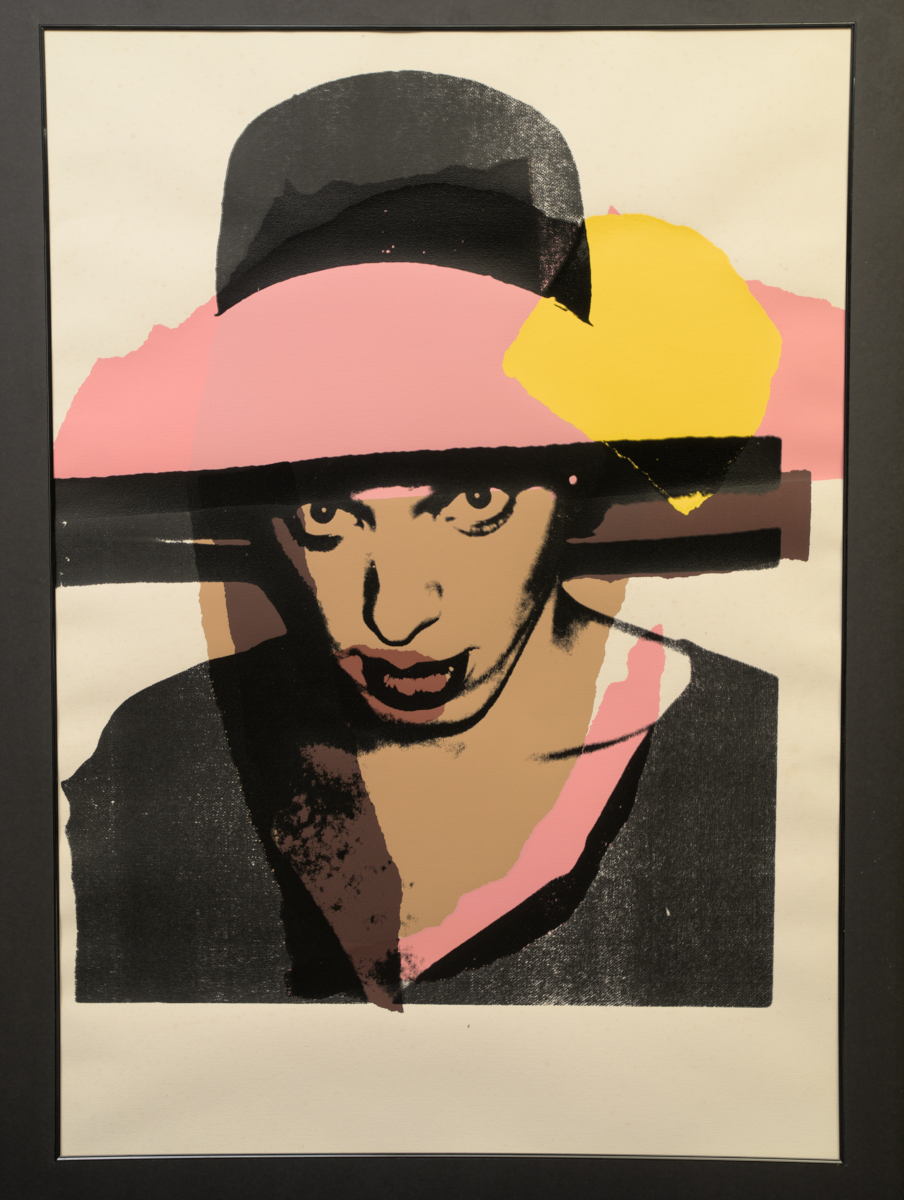

This
NFT serves as proof of ownership of the physical screen print of the
following work of Art:
It does NOT grant the owner any additional rights above and beyond what rights are assumed when the owner comes in posession of the actual, physical print itself.
This is the official record, minted on Oct. 25, 2022. Other nfts on other blockchains may point to this NFT, stating that this is the one main NFT for this piece, in order to make ownership known, transparent and verifiable.
Included in this NFT is
unlockable content consisting of hi-resolution images of the print
itself, the signature on the back and images of the Certificate of
Authenticity.
If you are interested in this print and nft, you can contact me at warholladiesandgentlemen130@gmail.com and I will be happy to send you over the copies of the documents with my name and address on them. I didn’t think it would be smart to plaster that information all over the internet.
Shipping will be paid for by the buyer. I will be happy to bring the print to the shipping company/post office/UPS/Fed Ex location of your choice, etc.
More details about this print:
ANDY WARHOL, LADIES & GENTLEMEN (F. & S. II.130), LADIES & GENTLEMEN SERIES, SIGNED SCREEN PRINT (73/125) IN COLOURS ON ARCHES WOVE PAPER, 1975, with CERTIFICATE OF AUTHENTICITY.
Andy Warhol
Ladies and Gentlemen II.130, 1975
Screenprint
43 1/2 × 28 1/2 in
110.5 × 72.4 cm
Edition: 73 of 250, signed and numbered and dated ’75 in pencil
This work has been assigned RPAA Warhol archive number: AW22-214
Certificate of Authenticity by Richard Polsky, an internationally known authority on Warhol's work.
Richard Polsky Art Authentication has been featured in over 200 international online publications and media outlets including: Time, Rolling Stone, The Smithsonian, The Guardian, The London Times, USA Today, the BBC, CNN, Fox News, etc.
Ladies and Gentlemen 130 by Andy Warhol is a screenprint from the Ladies and Gentlemen portfolio, commissioned by Italian art dealer Luciano Anselmino. Ladies and Gentlemen shines a spotlight on the New York City drag scene that arose in the 1970s, specifically by scouting transgender women from the infamous dive nightclub, The Gilded Grape. Although these models were not commercially famous, Warhol depicts them in such a manner. He uses the same color and composition techniques that he applied for some of the greats he portrayed around the same time, like Muhammad Ali and Mick Jagger.
In Ladies and Gentlemen 130, the model tilts her head down and stares up at the viewer. Her skin and eyeballs are all the same color, which gives her an overabundant neutral pallor. The lack of emphasis on her skin allows her apparel to stand out, which includes a black hat brimmed with solid pops of soft baby pink and yellow. She sports that same shade of pink as a highlight for her black blouse. Warhol paints her naturally voluptuous lips in a Sangria red that bleeds outside the lips’ contours, adding red to the right side of her chin and cheek.
Ladies and Gentlemen 130 is one of the most understated portraits in the series. Unlike the theatrical Ladies and Gentlemen 128 and 129, who are washed in vibrant colors and geometric designs that exude a sense of flamboyant confidence, the model of Ladies and Gentlemen 130 comes across as bold but timid, possibly representative of her reluctance to open up to the world.
Warhol uses colors in Ladies and Gentlemen 130 to further explore the idea of gender and identity. He places the blocks of color overtop the model, as if colors themselves create a featureless second face. In a sense, colors could transform Ladies and Gentlemen 130 into a work of performative art, showing the model in two lights; her biological one, and her identity as a drag queen, evoked by colors. Colors are expressive, too, and allow the freedom of her feminine self to begin to emerge.
Andy Warhol used a Polaroid camera for the series, having gathered around 500 images before screen printing half of them. He used his trusty Polaroid Big Shot for its ability to take hundreds of focused portraits quickly. Further, allowing the models to pose however they wished, he was able to better capture their personality and transfer it into the artwork.
New York was a haven for members of the drag community in the 1970s, and many have described The Gilded Grape as New York’s best and only place where transgender people could participate in drag. Their small acceptance may better explain why the models’ identities remained a mystery in the original portfolio. Warhol’s negligence of their identities was remedied in 2014 when some names were revealed, but at the time they were not recognized for their contribution to the series. Wilhelmina Ross, and Marsha P. Johnson are perhaps the most well-known figures from the series.
Even though Andy Warhol did not individualize and identify the models in the portfolio, he drastically broadened the horizons of his art by featuring them. More importantly, he planted a seed for positive media recognition of other subcultures in the country, giving the queens a platform to freely express themselves. Ladies and Gentlemen 130 is thus a classic, yet incredibly unique piece from Warhol’s oeuvre.




